Photo



According to the latest news, Washington wants to feminize the trip to the moon. Mike Pence, Vice President of the United States, said last Wednesday « The first woman and the next man on the moon will be American astronauts launched by American rockets from American soil »
Already in early March, it was declared that for the first time, two female astronauts, Anne McClain and Christina Koch, would be going out of the International Space Station (ISS). This outing was cancelled due to a lack of a suit of the appropriate size for one of these astronauts. This has angered many users of social networks.
Valentina Terechkova is the first woman to go into space. This Soviet cosmonaut came from a poor family. After limited studies, she started working in a textile factory. However, her passion for parachute jumping from an early age made her an ideal candidate for the space project. Her shuttle took off on May 21, 1959, when she was only 26 years old, making her the youngest woman to date to have been in space.
Sally Ride is the youngest and first American astronaut to travel to space in 1983, at the age of 32. She participates in two space missions as a mission specialist. The objective was to deploy satellites and conduct pharmaceutical experiments. She is the first person to use a robotic arm to pick up a satellite that has become obsolete. After her career with NASA, she turned to education and created a program to stimulate interest in science among children. She also writes books for the general public on science.
And finally, we never forget the tragic fate of Christiana MacAuliffe. Born in Boston in 1948, she observed the first space programs as a child. Despite all her efforts, she failed to realize her dream of participating in these programs, and later became a history teacher in a high school in the State of Maryland. In 1984, Ronald Reagan launched an educational project with the objective of sending a teacher to space to give lessons. NASA was then looking for a civilian, gifted in pedagogy, but above all, “a normal person”. Christa sees her chance and applies for the job with 11,000 other people.
She is finally selected and becomes a real star. In addition to the basic experiments assigned to her by NASA, she was required to complete several courses that would be broadcast live on television, in addition to a guided tour of the space station. After a year of training and a rare popular excitement due to her media appearances, she took place in the Challenger shuttle on January 28, 1986 but she never saw space since the shuttle exploded 73 seconds after takeoff. The accident, broadcast live on television, will leave an indelible mark on the minds of Americans.
Since the 1980s, the number of female astronauts has increased continuously, and there has been a growing presence of women in this field.
From the beginning of the conquest of space, women were among the first to participate in space programs. In this field, as in other scientific fields, women are making progress despite the obstacles, thanks to the procursors and activists who are doing their best to advance the cause of women.
*
Lady Jamileh Kharrazi, humanitarian and a philanthropist, advocate of human and education rights, believes that education is critical to ending human rights abuses, and that greater educational opportunities for women and disadvantaged individuals will lead to a more peaceful and prosperous future. She strives to ensure that many across the world have access to higher education. She is a Prominent Benefactor of the American University of Afghanistan (“AUAF”) and also works closely with Harvard’s Middle East Initiative to unpack cultural, historical and religious misunderstanding in the region.
0 notes
Photo
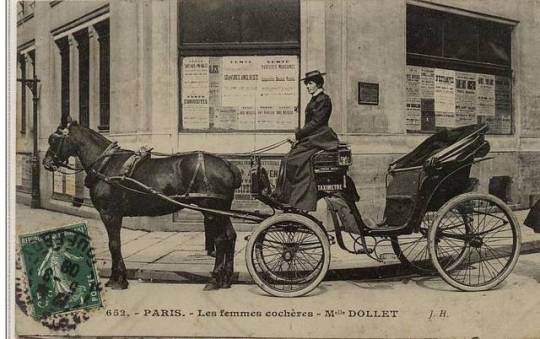

In many professions, women had to wait a long time to obtain the same rights as men. It was only in 1908 that the first female taxi driver, Madame Decourcelle, appeared in Paris.
Before Madame Decourcelle, a number of women had already started learning this profession from 1906 to take the coachman’s exam, but the many obstacles made most of them abandon the apprenticeship and leave this field. As this profession was then a male profession, this very attempt to pass the coachman’s exam was despised by the male coachmen and even the families of these women. However, in 1907, the first female coachwomens appeared on the streets of Paris, which provoked a real curiosity for the Parisians.
Having already obtained a licence as a coachwoman, Madame Decourcelle obtained a licence as a taxi driver in 1908 and thus became the first woman in history to drive a taxi.
Noticing the bravery of Madame Decourcelle, who, despite the difficulties of the time, was driving in the streets of Paris, many women decided to enter this profession.
To have an idea of the patriarchal ambience and sexist language of the time, it is enough to notice these remarks, published in the edition of April 5, 1905 of Le Figaro:
“It is very likely that the art of driving a car will never become a profession for women, because there is no career where the usual imperfections of the female character can lead to such frightening results.”
A century later, women’s struggle for professional equality continues throughout the world. One of the conditions for women’s emancipation, the fight for professional equality, feeds other women’s movements such as the fight against violence against women, the fight to improve women’s education, etc. The #metoo movement, launched in October 2017, is a recent example of women’s struggle for professional equality.
In this context, the role of activists and philanthopes is crucial. Lady Jamil Kharrazi, a London-based Artist, Philanthropist and Women Rights Activist, a Prominent Benefactor of the American University of Afghanistan (“AUAF”) and Senior Executive of the Phoolan Devi film, works hard for women’s rights especially in countries like Afghanistan and India where women face inequalities and discriminations.
0 notes
Photo

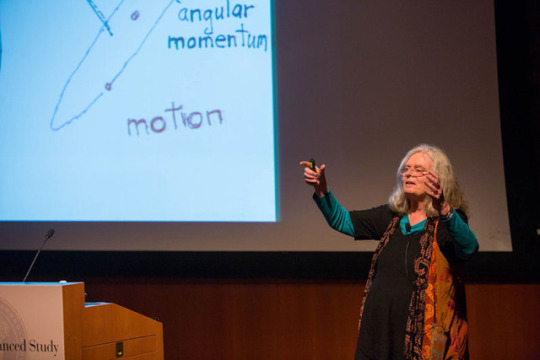
American mathematician Karen Uhlenbeck is the first woman to receive one of the most prestigious awards in mathematics, the Abel Prize. This prize has been awarded annually since 2003 by a jury of the Norwegian Academy of Sciences and Humanities.
According to the official Nobel website, of the 607 Nobel Prize winners in physics, chemistry and medicine between 1901 and 2018, there are only 19 women (Marie Curie having been awarded twice, with the Nobel Prize in physics and chemistry).
The other major world prize for mathematics often compared to the Nobel Prize, in addition to the Abel Prize, is the Fields Medal, awarded every four years.
This award is also given only once to a woman, in 2014, when she went to Iranian Maryam Mirzakhani, who died in 2017.
Karen Uhlenbeck, 76, is a visiting academic research fellow at Princeton University, an associate professor at the Institute for Advanced Study (IAS) in Princeton, and Professor Emeritus at the University of Austin, Texas.
She was born in 1942 in Cleveland, United States. A avid reader from an early age, especially of science books, she dreamed of pursuing a scientific career at a very early age. When she entered university, she was more interested in physics research, inspired by the writings of the great physicists Fred Hoyle and George Gamow. But then she became passionate about “the structure, elegance and beauty of mathematics”.
In the mid-1960s, she undertook her PhD under the supervision of Richard Palais at Brandeis University and worked on the calculus of variations, a field of mathematics which dates back to Isaac Newton’s pioneering work.
In 1990, in Kyoto, Japan, she gave a plenary lecture at the International Congress of Mathematicians. This major international gathering of the mathematical community takes place every four years. Plenary conferences are an opportunity to provide an overview of progress in a field and it is presented by one of the experts on the subject. Karen Uhlenbeck was then only the second woman to be invited to present a plenary lecture, after Emmy Noether in 1932… an event of such rarity that it shows how much research in mathematics is predominantly masculine.
Women have taken a further step towards greater equality in the still very male world of science, with the award of the prestigious Abel Prize in Mathematics to the American Karen Uhlenbeck, a specialist in partial differential equations.
0 notes
Photo
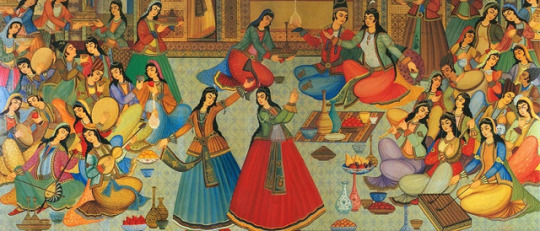


Since February 2006, the festival of Norouz (the “new day”) has been included on the list of the intangible cultural heritage of humanity.
On March 21, first day of spring, more than 300 million men and women celebrate the “Norouz”. It includes Afghanistan, Azerbaijan, India, Iran, Iraq, Kazakhstan, Kyrgyzstan, Pakistan, Tajikistan, Turkey, Turkmenistan and Uzbekistan. But also all Western countries where diasporas from these countries live, such as Canada, the United States, France, etc. The word “Norouz” is composed of two morphemes: “Now” and “rouz” which mean “new” and “day”. This is the name given to the most important Iranian celebration.
According to mythical Iranian and Zoroastrian traditions, Norouz is the time when God created the universe. It marks the rebirth. It is also the day of the creation of Gayumarth, the first mythical king in Ferdowsi’s Shahnâmeh.
Although customs vary from country to country, there are common characteristics. Preparations and rituals begin in February. Every household has a big cleaning at home. In the days before New Year’s Eve, characters named Hadji Firouz, dressed in black make-up and red, are walking the streets, singing and dancing for the New Year.
Norouz’s poetry reaches its peak through the tradition of the “fâl-e Hâfez”, the idea is to randomly open a page of Hafez’s poetry collection: what you read will give you an idea of your upcoming year. In the “haft-sin”, seven items whose names begin with the letter S or “sîn” of the Persian alphabet, and that is a kind of Iranian Christmas tree, you can find for example an apple, vinegar, garlic, sumac, samanu (a kind of crushed wheat puree), coins, the sabzeh. The Norouz celebrations last 12 days, during which Iranians visit family, friends and neighbours. On the 13th day called Sizdah Bedar (literally “thirteenth outside”), families leave their homes and go out for a picnic. These open-air festivities, aimed at conquering the misfortune of the number 13, are generally accompanied by music and dance.
In 2006, UNESCO placed this celebration on the Representative List of the Intangible Cultural Heritage of Humanity. Here is the presentation, which highlights the celebration of Nature, the renewal of life:
New Year is often a time when people wish for prosperity and new beginnings. March 21 marks the start of the year in Afghanistan, Azerbaijan, India, Iran (Islamic Republic of), Iraq, Kazakhstan, Kyrgyzstan, Pakistan, Tajikistan, Turkey, Turkmenistan and Uzbekistan. It is referred to as Nauryz, Navruz, Nawrouz, Nevruz, Nooruz, Novruz, Nowrouz or Nowruz meaning ‘new day’ when a variety of rituals, ceremonies and other cultural events take place for a period of about two weeks. An important tradition practised during this time is the gathering around ‘the Table’, decorated with objects that symbolize purity, brightness, livelihood and wealth, to enjoy a special meal with loved ones. New clothes are worn and visits made to relatives, particularly the elderly and neighbours. Gifts are exchanged, especially for children, featuring objects made by artisans. There are also street performances of music and dance, public rituals involving water and fire, traditional sports and the making of handicrafts. These practices support cultural diversity and tolerance and contribute to building community solidarity and peace. They are transmitted from older to younger generations through observation and participation.
5 notes
·
View notes
Photo
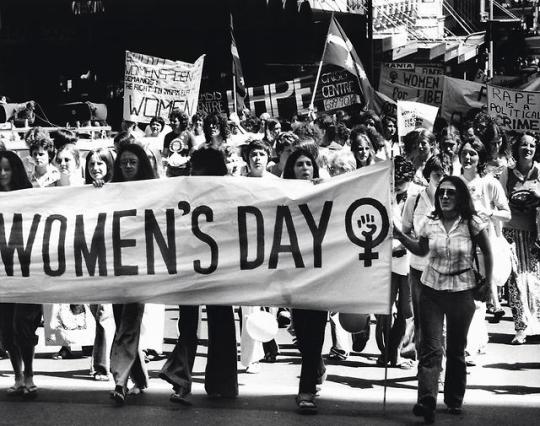
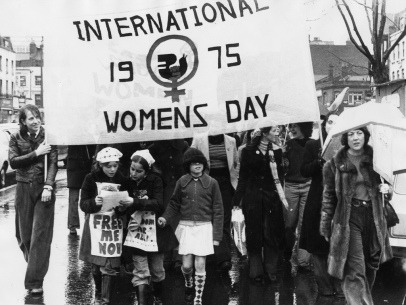
“There is one thing that brings all women together: the pain and injustice that is caused by their societies, especially in those countries where it is men who make the law.” Says Lady Kharrazi in an interview with Shushma Datt.
Born of feminist and political struggles, International Women’s Day is celebrated every year throughout the world on March 8. International Women’s Day was officially recognized in 1977 by the UN and is still celebrated on March 8 all over the world. It is a day when women around the world are recognized for their achievements and struggles.
The first demonstration of Women’s Day goes back 110 years this year. It was on February 28, 1909 that the first National Women’s Day was celebrated in the United States. Until 1913, this day was celebrated there every last Sunday of the month.
In 1910, an international women’s conference in Copenhagen established an international Women’s Day to pay tribute to the women’s rights movement and their access to universal suffrage. This proposal is approved by a group of 100 women, all from 17 different countries. But at this second conference, no precise date was decided. Following this decision, International Women’s Day was celebrated on 19 March in several countries: Germany, Austria, Denmark and Switzerland. These countries brought together more than a million women at the rallies. On the last Sunday of February 1913, in Russia, on the eve of the First World War, Russian women celebrated their first International Women’s Day. The following year, it was celebrated on 2 March in France, 9 March in Austria, the Czech Republic, Hungary, Switzerland and the Netherlands, and 12 March in Germany. On March 8, 1914, German women raised their voices to obtain the right to vote. It was only 4 years later that they obtained it. It is only after the Second World War that International Women’s Day is celebrated all over the world on March 8. In France, Italy and Western countries, this date then became a tradition.
In the 1970s, feminism grew more and more and the famous March 8th became a symbol of women’s struggles. In 1975, the United Nations decided to recognize International Women’s Day on March 8. Twenty years later, the Beijing Declaration were adopted by 189 governments during the Fourth World Conference on Women. The Programme of Action advocates a world where every woman and girl can exercise her freedoms and choices. They have the right to know and understand their rights.
This day, celebrated in many countries throughout the world on March 8, is an opportunity to take an overview of the situation of women.
The theme for International Women’s Day 2019, which will take place on 8 March, is “Think equal, build smart, innovate for change”. The theme will focus on innovative ways in which we can advance gender equality and the empowerment of women, particularly in the areas of social protection systems, access to public services and sustainable infrastructure. This day is a reminder that while equality of rights between men and women is progressing in the law, this is still far from being the case in practice and in attitudes. It is a time of reflection and visibility for the defence of women’s rights, against the inequalities and injustices that they still experience on a daily basis throughout the world.
Philanthropists and women right activists work hard all over the world to promote gender equality. Lady Jamil Kharrazi, a London-based Artist, Philanthropist and Women Rights Activist is one of them. Founder and director of Toos Foundation, she is actually a Prominent Benefactor of the American University of Afghanistan (“AUAF”) and Senior Executive of the Phoolan Devi film; a documentary film about Phoolan Devi, the Indian Bandit Queen.
“There is one thing that brings all women together: the pain and injustice, especially in those countries where it is men who make the law.” Says Lady Jamil Kharrazi in an interview with Shushma Datt.
0 notes
Photo


Betty Friedan was an American feminist, the founder of the National Organization for Women (NOW) movement (now). Influenced by Simone de Beauvoir, she spent her life trying to get women out of their domestic prisons as she fought for equal opportunities between the sexes.
Born on February 4, 1921 to a Jewish family in Peoria, Illinois, she studied psychology brilliantly but gave up a career by marrying Carl Friedan, a theatre director, from whom she divorced in 1969. The couple had three children. She was first satisfied with being a typical housewife, devoted wife and mother. But this family life was becoming more and more annoying to her.
In her kitchen, on an old machine, she writes. And it was in 1963 that “The Feminine Mystique” was published. The book quickly became a bestseller. She denounces the silent alienation of housewives reduced to household chores and “childcare”. Women can and must find the keys to their own identity without guilt elsewhere than in antidepressants and psychoanalysis.
Friedan did not stop there and, with other women, she founded the National Women’s Organization (NOW) in 1966. NOW campaigned for the right to abortion and a multitude of hard-won demands: women’s work with equal pay, maternity leave, childcare, etc.
But Betty Friedan did not go as far into “radicalism” as other feminists: careful not to marginalize the women’s movement in society, she advised women not to reject men and to treat them as potential allies.
The fact that women work does not bring them any equality. In My Life she worries about the difficulty the women have in reconciling work and family life. Do they have to give up motherhood for their careers or do they have to give it up for their careers? Independence seemed to her a promise of happiness but she realized that the price was high.
Kim Gandy, current president of NOW, said that The Feminine Mystique had “opened women’s eyes”. “Betty perceived an aspiration of the women of her generation, an aspiration for something more, a chance to live her own dreams beyond the narrow definition of’femininity’ that had limited their lives”.
In 2006, Betty Friedan died of a heart attack on her 85th birthday.
*
Lady Jamil Kharrazi, a London-based Artist, Philanthropist and Women Rights Activist, a Prominent Benefactor of the American University of Afghanistan (“AUAF”) and Senior Executive of the Phoolan Devi film, works hard for women’s rights especially in countries like Afghanistan and India where women face inequalities and discriminations.
Her most recent project is a documentary film about Phoolan Devi, the Indian Bandit Queen who became a Member of the Parliament and was celebrated for overcoming adversity and gang rape. “Phoolan Devi was not just a woman, she was a legend, she was dynamic – an inspiration for today’s women to know their humanistic rights, an empowering force to stand against abuse and injustice,” Lady Kharrazi said in an interview with Shushma Datt – Women in Focus.
0 notes
Photo
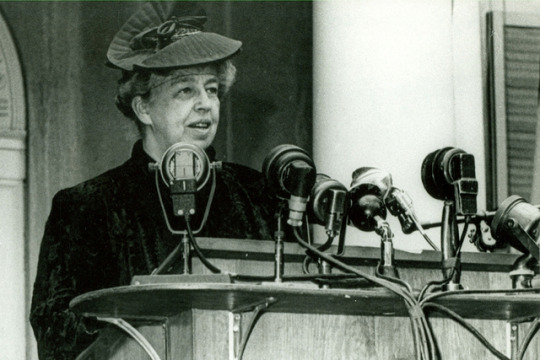
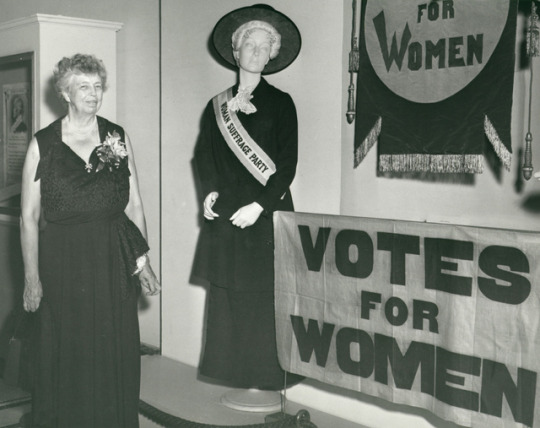
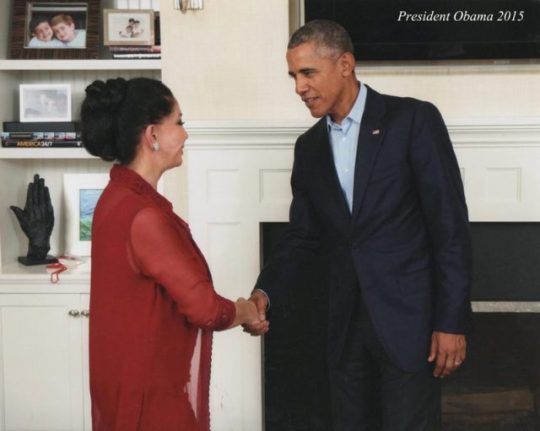
While Franklin Delano Roosevelt’s life has been largely related over the past 70 years – the number of new biographies and essays still dedicated to him today attest to this – the life of his wife Eleanor remains unknown to the general public.
Eleanor Roosevelt held the title of First Lady of the United States from March 4, 1933 to April 12, 1945. Eleanor Roosevelt was the first president’s wife to take on a real political role. She was the first president of the U.S. Presidential Commission on the Status of Women and chaired the committee responsible for drafting the Universal Declaration of Human Rights.
Anna Eleanor Roosevelt was born in 1884 into a wealthy family of the American aristocracy. It was in 1905 that she married her distant cousin, Franklin Delano Roosevelt. With him, she had six children, one of whom died at an early age. Eleanor Roosevelt left her role as a submissive wife to fully interfere in politics. She played a real role as an advisor on foreign policy, and was at the origin of measures for the rights of women, the black population, the poor,… A renowned feminist, Eleanor Roosevelt personally engaged herself for defending women’s rights. For example, she contributed to the creation of the Women Airforce Service Pilots, a paramilitary organization of female civilian pilots in support of the US Air Force during the Second World War.
She was the niece of the 26th President of the United States, Theodore Roosevelt. As a young mother, she remained faded behind her husband, Franklin Roosevelt. In 1921, everything changed. Franklin has a paralyzing disease. Eleanor then became “the legs and eyes” of her husband already involved in politics. She surveyed the United States and prepared precious reports for him, preparing for the 1932 election, which made him the 32nd American President. The First Lady was then omnipresent: she defended social policy, was committed to women and the African-American community, wrote in the newspapers, hosted a radio show, etc.
After the death of her husband in 1945, Eleanor Roosevelt’s career took a new turn. She became American delegate to the United Nations in 1945, chairing the drafting committee of the Universal Declaration of Human Rights, working to ensure that the Declaration encompasses the rights of men and women, not just those of men. It was in 1948 in Paris that she had the Declaration signed, which established the principle that no discrimination should exist on the basis of sex or race.
Eleanor Roosevelt’ name is registered at the National Women’s Hall of Fame, which perpetuates the memory of famous women. She was also awarded the United Nations Human Rights Prize in 1968, posthumously.
*
Women’s efforts to be able to participate more actively in politics but also their efforts to improve the conditions for the education of women in the world have not stopped increasing.
Lady Jamil Kharrazi, a London-based Artist, Philanthropist and Women Rights Activist, a Prominent Benefactor of the American University of Afghanistan (“AUAF”) and Senior Executive of the Phoolan Devi film, works hard for women’s rights especially in countries like Afghanistan and India where women face inequalities and discriminations. A staunch supporter of the Arts and Human Rights with special interest in defence of womens rights.
0 notes
Photo


Rachel Carson (1907-1964) was an American heroine. In the early 1960s, she was the first to warn against a pesticide called DDT that could accumulate in the environment; the first to show that it could cause serious damage to fish, birds and many other animals; the first to predict that excessive use would eventually make it ineffective; and the first to advocate the alternative use of more natural pesticides.
Born in 1907, Rachel Carson spent her childhood surrounded by 65 acres of forest and fields in the Pennsylvania family estate. Very close to her mother who introduced her to nature and writing, she made it her two passions: by publishing her first story at the age of 10 and then studying English before moving on to biology, by pursuing a Master’s degree in zoology at Johns Hopkins University.
Rachel Carson then joined the US Bureau of Fisheries as a junior aquatic biologist, but her writing skills were quickly put to use in radio programs, until she was appointed editor-in-chief of publications for the Bureau of Fisheries, now the US Fish and Wildlife Service in 1947.
At the same time, she expressed her love of the sea in two books that will earn her some success (This sea that surrounds us, translated into 30 languages remains for more than 30 weeks at the top of sales in the United States).
In particular, having received a letter from friends saying that DDT was killing birds in their refuge, she began to work on this question that almost no one was asking. After four years of work, she published Silent Spring to warn of a world where birds had disappeared from the countryside.
Its publication in the New Yorker immediately triggered a fierce response from those who did not want or had no interest in recognizing the danger of pesticides. She was accused of hysteria, blamed for focusing on emotion, and questioning her skills as a scientist.
In any case, the book was a huge success (more than 500,000 copies sold in the United States), and triggered an awareness that the general public was ready to hear what Rachel Carson had to say.
While writing Silent Spring, Rachel Carson had to undergo a mastectomy and radiotherapy. Eighteen months after the book was published, she died of breast cancer. Ironically, his book points out the links between this disease and exposure to chemicals.
Lady Jamileh Kharrazi, humanitarian and a philanthropist, advocate of human and education rights, believes that education is critical to ending human rights abuses, and that greater educational opportunities for women and disadvantaged individuals will lead to a more peaceful and prosperous future. She strives to ensure that many across the world have access to higher education. She is a Prominent Benefactor of the American University of Afghanistan (“AUAF”) and also works closely with Harvard’s Middle East Initiative to unpack cultural, historical and religious misunderstanding in the region.
0 notes
Photo

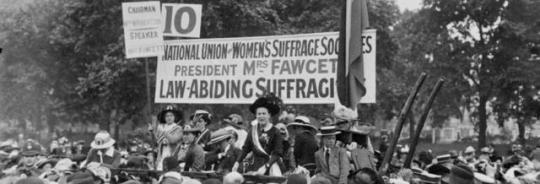
In the British Empire of the second half of the 19th century, women, whether rich or poor, have no more rights than a criminal, a child or even a mentally ill person. For the same occupation, they earn one-third of what a man earns and have no access to education.
This retrograde conception of woman, some will try, at any cost, to change it. They are convinced that this improvement in women’s living conditions requires the right to vote.
Born in 1847 into a rather liberal family, Millicent Garrett Fawcett, campaigned since the 1870s for the right to vote for women. Widowed that same year 1884, she devoted herself fully to politics.
Millicent Garrett Fawcett was, for fifty years, the leading British suffragist. Born on June 11, 1847 in Aldeburgh, Millicent Garrett is the seventh of the ten children of the shipowner Newson Garrett. This radical will support the efforts of her eldest daughter, Elizabeth Garrett Anderson, for years to come when she, one of the first female physicians and a pioneer in medical education, fights for the right to practice her profession. In April 1867, the young Millicent married Henry Fawcett, a man of radical ideas and a professor of political economy at Cambridge. She helped her husband overcome the difficulties caused by her blindness, while the latter encouraged her in promoting women’s rights, from the first speech she gave on women’s voting in 1868.
Millicent Garrett Fawcett began working in 1869 to create Newnham College in Cambridge, one of the first English university colleges for women, two years later. From the beginning of her career, she had to fight against the opposition of the men, who almost unanimously refused to grant women any political rights.
Fawcett was a founding member of the National Union of Women’s Suffrage Societies in 1897 and served as its president. In 1918, Parliament passed the Representation of the People Act: all men over 21 years of age, and women over 31 years of age who are married to a man registered on the electoral lists and owners, now have the right to vote. That means 2 million more men and 6 million women! After 50 years of fighting to change the perception of women in public opinion, it is a considerable success.
It was in July 1928 that a new law introduced full equality of the right to vote between men and women. Anyone over 21 years of age can now vote.
*
Women’s efforts to be able to participate more actively in politics but also their efforts to improve the conditions for the education of women in the world have not stopped increasing.
Lady Jamil Kharrazi, a London-based Artist, Philanthropist and Women Rights Activist, a Prominent Benefactor of the American University of Afghanistan (“AUAF”) and Senior Executive of the Phoolan Devi film, works hard for women’s rights especially in countries like Afghanistan and India where women face inequalities and discriminations.
0 notes
Photo
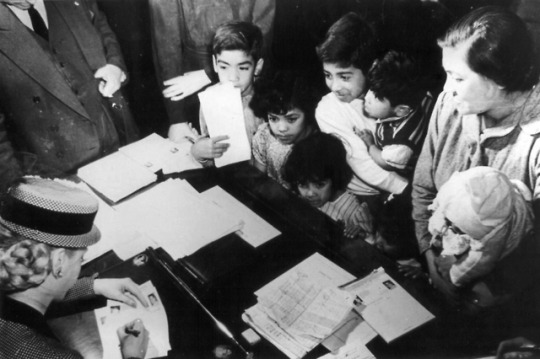


Evita Peron, adored by millions of people, is still a powerful symbol in Argentina 67 years after her untimely death, fuelled by her dazzling social rise to the top of the political elite and her struggle for the underprivileged, inspiring books, operas and films.
Born Eva Maria Duarte, Eva Peron is the fruit of two different cultures and two different worlds. His father is a wealthy landowner, who maintains another family on the farm alongside his legitimate family, of which Eva and her brothers and sisters are part.
When Eva Peron was 6 years old, her father dies in a car accident. She and her family were in dire need before they moved to Junin in 1930. Their financial situation improves as her mother finds a job as a seamstress. Eva Peron discovers theatre in high school and decides to make it her profession. At the age of 15, she moves to Buenos Aires and soon gets small roles on the stage. She also does the cover of fashion magazines. It is in 1942 that the actress really makes a breakthrough, when she is hired for 5 years in a radio show broadcast daily.
In January 1944, Eva meets Juan Peron, a leading politician who has been a widower for 4 years. They marry the following year and Eva, nicknamed “Evita” by the Argentine people, actively participates in her husband’s presidential campaign. On June 4, 1946, Juan Peron celebrates his victory. His wife takes on an active political and social role. She passes the law on women’s voting, creates a foundation to fight poverty and oppression of women and founds the Women’s Peronist Party. Thanks to its Evita Foundation, it is launching vast social assistance programmes that will improve the lives of millions of people, building 12 hospitals, numerous retirement homes and more than a thousand schools.
Sick, she had to limit her activities from 1944 and died of cancer the following year. Many South American feminists (including Cristina Kirchner, future President of Argentina) claim to be part of Evita’s legacy, a mixture of political courage and conviction.
“What remains is what she has done in five years of political life, a period as intense as it is brief, linked to social action and women’s voting,” says historian Felipe Pigna, author of a biography of Evita Peron, of which 30,000 copies were sold in less than a month.
Like Evita Peron, women around the world are casting off violence and oppression to become leaders. Strong mentorship and support from influential women inspires the next generation of girls to so the same.
Lady Kharrazi is currently working on a film about Phoolan Devi, giving the world more insight into this important female folk hero. Both Phoolan and Lady Kharrazi offer the type of mentorship that the next generation needs to overcome political barriers.
0 notes
Photo
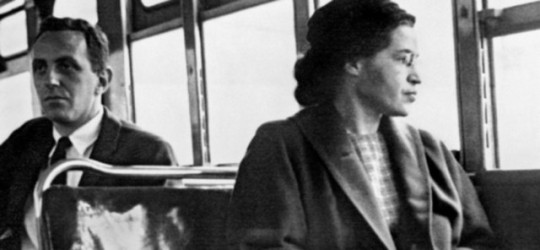
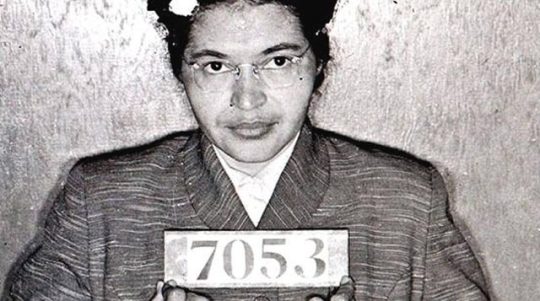

Born in Tuskegee, Alabama, Rosa Parks is the daughter of a carpenter and a teacher. After her parents’ divorce, she lives on a farm with her brother, grandparents and mother who is committed to ensuring that her daughter receives a good education despite the barriers to black schooling. She started secondary school and had to interrupt it to take care of her grandmother and then her mother who became ill.
Rosa, who works as a seamstress, but also as a caregiver, marries Raymond Parks, a barber who is a civil rights activist and a member of the Alabama Association for the Promotion of People of Colour. Encouraged by her husband and despite her family responsibilities, she finished high school in 1934, a level only 7% of Blacks reached at that time.
In 1943, Rosa Parks joined the Civil Rights Movement, for which she served as secretary until 1957. She also works as a cleaner for a Liberal couple, Clifford and Virginia Durr, whose husband is a lawyer who has played an important role in defending activists and persons accused of treason, particularly during the McCarthyism era. Having sympathized with Rosa Parks, the couple encouraged her to take civil rights and racial equality training in Tennessee.
On December 1, 1955, in the city of Montgomery, Alabama, Rosa Parks, who was sitting in a seat reserved for whites, refused to obey a bus driver who asked her to leave her seat and sit at the back of the vehicle. She is arrested, tried and charged with public disorder and violation of local laws, with a fine of $15. She fully assumes her gesture, which was not premeditated, however.
“People say that I refused to give up my seat because I was tired, but that’s not true. I wasn’t physically tired, or any more than usual at the end of a working day. I wasn’t old, while some people think of me as old. I was 42 years old. No, the only fatigue I had was to give in.”
Rosa Parks appeals against the judgment. White lawyer Clifford Durr agrees to challenge the constitutionality of the segregationist law. For his part, 26-year-old Martin Luther King, with the help of leaders of the African-American community, launched a non-violent protest campaign and boycott against the Montgomery bus company, a boycott that lasted 381 days. Finally, on November 13, 1956, the Supreme Court broke segregationist laws on buses by declaring them unconstitutional.
Rosa Parks, who helped raise American awareness, became an emblematic figure in the fight against racial segregation and the fight for civil rights in the United States. But it was not until 1964 that segregationist laws were repealed in public places by the Civil Rights Act.
Finding no more work in Montgomery, as well as for her safety, Rosa Parks left the city for Virginia and then Detroit where she worked as a tailor. She then joined the team of Michigan’s Democratic representative, African-American John Conyers, in the United States House of Representatives where she remained until her retirement in 1988.
Rosa Parks experienced financial difficulties at the end of her life and died on October 24, 2005, following degenerative dementia. President George W. Bush and the entire political class paid tribute to him after his death. The American flag was lowered to half-mast on this occasion and his body was displayed on the Capitol for two days, an honour previously reserved for great men.
*
Lady Jamil Kharrazi, a London-based Artist, Philanthropist and Women Rights Activist, a Prominent Benefactor of the American University of Afghanistan (“AUAF”) and Senior Executive of the Phoolan Devi film, works hard for women’s rights especially in countries like Afghanistan and India where women face inequalities and discriminations.
Her most recent project is a documentary film about Phoolan Devi, the Indian Bandit Queen who became a Member of the Parliament and was celebrated for overcoming adversity and gang rape. “Phoolan Devi was not just a woman, she was a legend, she was dynamic – an inspiration for today’s women to know their humanistic rights, an empowering force to stand against abuse and injustice,” Lady Kharrazi said in an interview with Shushma Datt – Women in Focus.
0 notes
Photo

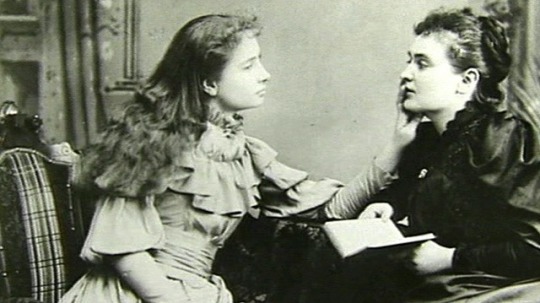
Blind, deaf and dumb since the age of one, Helen Keller has fought her disability with courage and determination by getting involved with others. A journey that commands respect.
During her lifetime, Helen Keller was involved in a wide range of activities: blind people’s rights, women’s rights, contraception rights, civil rights, defence of disabled veterans. In 1920, she co-founded the American Civil Liberties Union, which remains today a major civil liberties association in the United States. Thanks to its action, Braille became the official standard of reading and writing for the blind in 1932. And between 1946 and 1957, she travelled to 35 countries to alert international opinion on blindness and improve the quality of life of blind people. She was also an author and published her autobiography in 1903, which was translated into fifty languages. In total, she has published fourteen books and written more than 500 articles.
Helen Keller was born in Alabama in 1880. At a year and a half, she gets a very serious illness. This one leaves her deaf and blind. Very quickly, the little girl finds herself locked up, isolated. She cannot learn to read, write, speak, communicate with the outside world, understand what surrounds her.
At the age of six, her parents hired a teacher with low vision, Anne Sullivan. The mission of the latter is to teach him how to communicate. To make her understand things, Anne Sullivan draws the letters of the alphabet in the little girl’s hand every day. One day, in the garden, she spells out the word “water” in one hand, and in the other, she makes him touch the liquid. It’s the revelation. Helen Keller makes the association between the two gestures. Thanks to Anne Sullivan, she can finally break out of the isolation she was in. During her teenage years, she learned Braille and then reading. By touching her lips, Anne Sullivan also teaches her student the basics of speaking.
Thanks to this learning, but especially thanks to her determination, Helen Keller can have an education almost like any other. At school, she’s a champion, she succeeds at everything. She became the first deaf and blind person to graduate from a university. At 23, she published her autobiography Deaf, dumb and blind. It will be translated into 50 languages and a real success.
Throughout her career, Helen Keller fought hard. Fighting to be heard, fighting for others. She fights for the rights of the blind, deaf and disabled. It is also politically committed. She is committed to civil rights and women’s rights. Through her struggle, she also wishes to prove that the deaf and blind can communicate and survive in today’s society. In 1932, Braille became the official standard of reading and writing for the blind thanks to its struggle. Finally, from the 1940s to the end of the 1950s, it travelled the world to alert international opinion on blindness and disability in order to improve the lives and daily lives of all concerned.
There are also other feminist figures in history who could serve as models for us. One of them is Phoolan Devi. Phoolan Devi was a victim of rape. she fought against the culture of rape and male domination and eventually became a member of parliament.
Lady Kharrazi is currently working on a film about the life of Phoolan devi. By doing so, she aims to show that we can fight and change our lives: “Yes, you can change your caste Yes, you can defend yourself against the abuse, against the suffering and injustice of today … [Phoolan] talked about a lot of things that were not even in the minds at the time, “says Lady Kharrazi in an interview with Shusma Datt.
0 notes
Photo

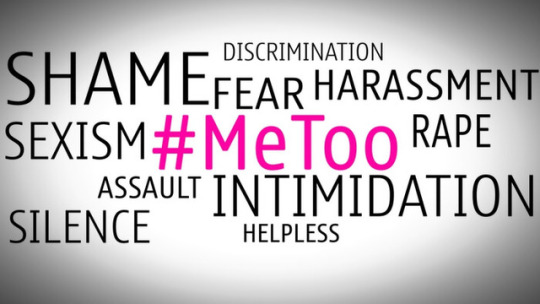
Now, a year after the start of the #MeToo movement, which has exposed harassment and abuse in industries ranging from Hollywood movies to Silicon Valley technology, Bloomberg has revisited it with an article on the movement’s impact on the Wall Street world.
The #MeToo movement affects all sectors of society. All over the world, men have decided to act more reluctantly towards women, so as not to be the target of allegations of inappropriate sexual behaviour. Men control their behaviour at work in the face of what they consider to be an unreasonable attitude.
These revelations do not only concern the world of finance in the United States. This trend was particularly noticeable on Wall Street, where men occupied the front lines. The industry has also long been able to avoid the tumultuous scandals that led to Wolfstein’s fall, by maintaining a culture that keeps harassment complaints away from the courts and public opinion. So far, the sector has also been able to avoid the major scandals that have affected several other industries. Private meetings are now open, men avoid being face-to-face with a woman in a room where no one can see them and many now say they are very aware of the place they leave to women in an elevator.
The impact of the # MeToo movement is just beginning to appear in the field. Although men who dare to discuss this subject openly are rare, private respondents acknowledge that it is difficult to be alone with colleagues, especially those who are young or attractive, for fear of what people will say and rumours.
Lady Kharrazi works to empower women through the arts and education. For example, she is currently helping to make a film about Phoolan Devi, the famous Indian criminal who became a political leader. Lady Kharrazi supports efforts to make new opportunities for women across the world. Her support of programs like the American University of Afghanistan, Harvard University’s initiatives in Lebanon, the University of Chicago Harris School of Public Policy, and the National University of Singapore has increased access to education for women.
0 notes
Photo




During a courtesy call to City Hall on Dec 6 Lady Jamil Kharazi was greeted by Scott Wagner, Mayor Pro Tem who presented her the Key to Kansas City, Mo.
During an hour long meeting the Mayor Pro Tem highlighted growth and accomplishments of the City in the past decade and encourage Lady Jamil to consider Kansas City as an ideal City to invest in real state development in particular for Senior Housing Projects.
Lady Jamil in expressing her appreciation to Mr Wagner said; this is my 3ed visit to Kansas City. The City is one of the most livable cities in the United States. I most certainly will consider Kansas City as the next destination for expansion of our US development
Toos Foundation
Toos Foundation is committed to the conservation and promotion of Iranian culture and history beyond the country. Lady Jamil Kharrazi has given her whole life to achieve the great goals of this foundation. With Lady Jamil Kharrazi’s efforts and leadership, the Toos Foundation has now become an internationally recognized foundation, honoured annually by the most respected governments, organizations and personalities.
She is always admired and has also been called, although she is still young, the Iranian mother Teresa. Iranians consider her a woman with a great passion for Iranian art and culture, and those in need admire her as their pretector.
With the mission of presenting and disseminating Iranian artistic and cultural heritage, Toos Foundation started its activity in 2006 and has made a significant achievements in the Iranian communities as well as at the European and American level.
Some projects realized by Toos Foundation are: Phoolan Devi documentary, Taq Kasra documentary, History of 3000 Years of Dance in Iran, 100 Years of Popular Music in Iran, Along the Silk Road from London to Los Angeles, History of Classical Music in Iran, and so on.
Artists and cultural personalities such as Lobat Vala, Faramarz Payvar, Javad Maroufi, Omar Khayyam and Abdolvahab Shahidi have been honoured by Toos Foundation in the major European and American amphitheatres. These programmes, rich in humanistic and patriotic aspirations, have made their mark on the lives of Iranians living abroad. During these programmes, not only were the names of the great masters of persian literature and poetry evoked, but also many young talents were presented to Iranian and international societies.
0 notes
Photo

They are housewives, working mothers or retired, they are 30, 40, sometimes 60 years old. They joined the “yellow vests” movement with the hope of increasing their purchasing power and improving their daily lives.
At the end of October, Jacline Mouraud posts a video on Facebook. She is angry, and says in her words that she is fed up with the increase in the price of gas, taxes and speed cameras, speaking directly to President Macron. In a few days, these images become viral and get nearly 5 million views (more than 6 million to date, editor’s note).
Another female face of the yellow vests is Priscillia Ludosky, 32, who lives in the Paris suburbs of Savigny-le-Temple. On 29 May 2018, she launched an online petition denouncing the increase in fuel prices, which today collected one million signatures. In mid-November, she published on her Facebook page a list of frequently asked questions explaining the origin of the movement, its motivations and its demands. Many articles mention it in the French press, and it has also appeared on some TV shows. Received by the Minister of Ecological Transition, and disappointed by this meeting, she called for a demonstration on 1 December.
“Women are the primary consumers and managers of family budgets. They are therefore the first to be affected by the tax increases and economic difficulties,” says Celine, a caregiver, who has been involved in the yellow vest movement since the beginning.
Within this movement born on social networks and without real leaders, women are in the front line. Having a difficult economic situation, often raising their children alone, rejecting politics, they have been among the most willing to mobilize.
0 notes
Photo

Omar Khayyâm: Mathematician, astronomer, philosopher and author of one of the most famous poetic works in the world
Mathematician, astronomer and Persian philosopher, author of one of the most famous poetic works in the world, the Roba’iyat. He took the name Khayyam, “tentmaker”, to honour his father’s profession. He was born on May 18, 1048 in Nichapur, Persia (now Iran) and died on December 4, 1131.
Of the fourteen treatises and scientific works attributed to Khayyam, only two have survived.
Despite all their importance, these works, far from satisfying the author in his metaphysical research, caused him strong feelings of disappointment and bitterness. Khayyam expressed these feelings in perfect epigrammatic poems called Roba’iyat.
In the West, he was best known for his poetic work, particularly his Roba’iyat: about a thousand of these quatrains are attributed to him. Khayam gave them a satirical, pessimistic and epicurean tone, while maintaining a lyrical style. The English poet and translator Edward Fitzgerald was the first to reveal Khayam’s poetic work to the West, thanks to the translation of about a hundred of these quatrains in 1859.
A disciple of Avicenna, he is known in the mathematical world for his comments on the Elements of Euclid and his classification of the different types of second and third degree algebraic equations where he makes use of radicals.
His work completed the work of Al-Khwarizmi and brought geometric (partial) resolutions to the equation of the third degree
Khayyam’s life is surrounded by mystery, and few sources are available to allow us to trace it accurately. He spent his childhood in the city of Balhi, where he studied under the direction of Sheik Mohammad Mansuri, one of the most famous researchers of his time. In his youth, Omar Khayyām also studied under the direction of Imam Mowaffak of Nishapur, considered the best teacher in Khorasan.
Legend has it that Abu Ali Hassan (Nizam al-Mulk) and Hassan ibn al-Sabbah were also studying under the direction of this master, which would give rise to a kind of legendary pact between the three men.
After Nizam al-Mulk became the great vizier of Persia, the other two went to see him. Hassan Sabbah, who is ambitious, asks for a place from the government, which he immediately obtains and later uses to try to take power in the place of his benefactor. It was only after being eliminated following this attempt that he became the leader of the Hashishins. Khayyam, who is less ambitious, is not asking for an official position, but just a place to live, study science and pray. He then received a pension of 1,200 mithkals of gold from the royal treasury; and this pension allowed him to live to the end of his life.
Astronomer of the court of the Seljuq sultan Jalal al-Din Malik Shah, he participated, along with other scientists, in the reform of the Persian calendar. When Malik shāh dies, he falls out of favor. It is possible that some of his unorthodox poems are the cause. To cut off all suspicion, he then undertakes a pilgrimage to Mecca. It is later found in Merv then capital of the Seljuk empire. He then ends his days in Nishapur.
0 notes
Photo

Globally, no less than one in two women has been subjected to violence by her partner and one in five women has been sexually assaulted or threatened. More than 80 per cent of victims of human trafficking are women and every year hundreds of thousands of women are victims of sexual mutilation.
Every year, November 25 marks everyone’s commitment to the elimination of violence against women.
Thousands of people demonstrated on Sunday across Spain on the occasion of the International Day for the Elimination of Violence against Women.
The demonstrators gathered in many cities including Madrid, Barcelona, Seville, Valencia, Bilbao and Pamplona, in a country where the fight against gender-based violence is a national cause.
In Turkey, police used tear gas on Sunday to prevent an unauthorized march in Istanbul on the occasion of the International Day for the Elimination of Violence against Women.
After several summons, police officers in riot gear repelled with tear gas and shields about a thousand people, mostly women, who had gathered to march on Istiklal Avenue, one of the busiest streets in Istanbul.
“We will not be silent, we are not afraid, we will not obey”, chanted the demonstrators, holding up signs that read “against violence against women”, “we defend life” or “united, women are strong”.
Today, violence against women and girls is one of the most widespread, persistent and devastating human rights violations in the world. It also remains one of the least reported due to the impunity, silence, stigmatization and shame surrounding it.
0 notes